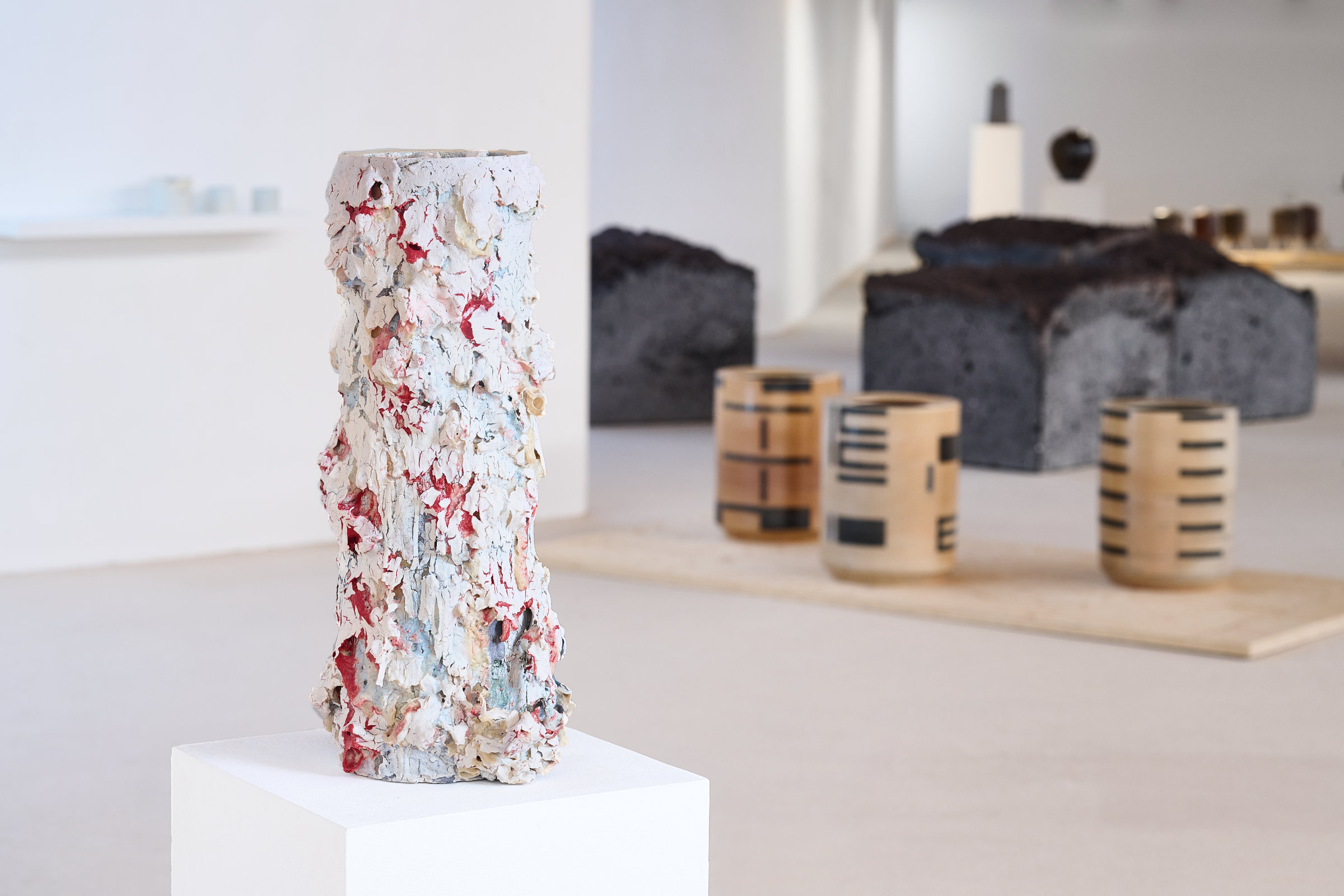
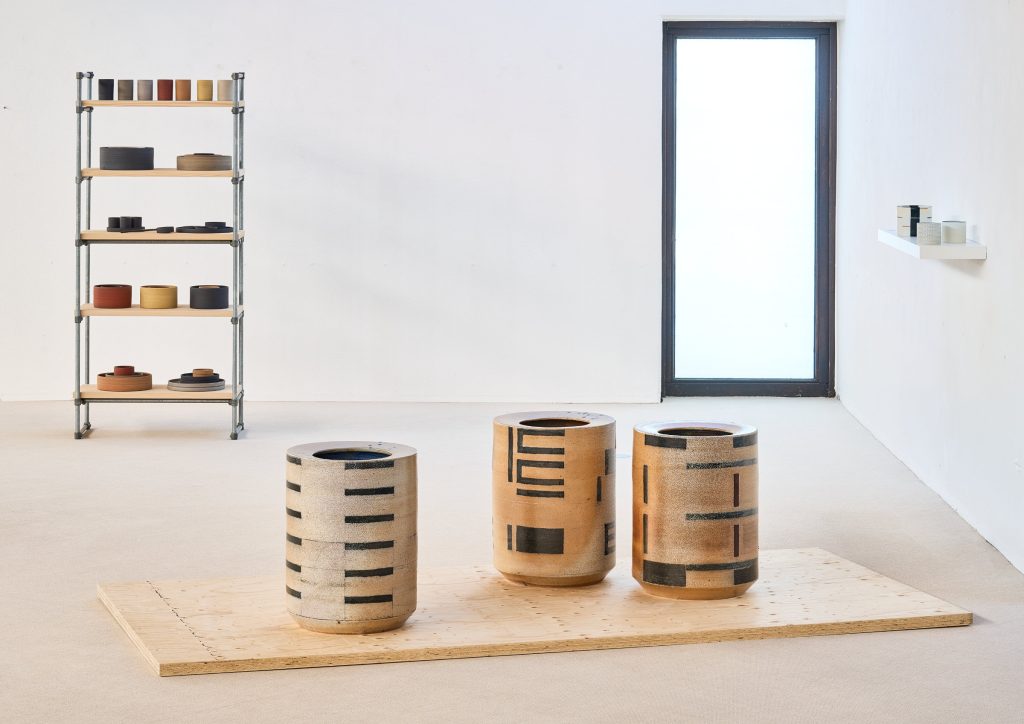
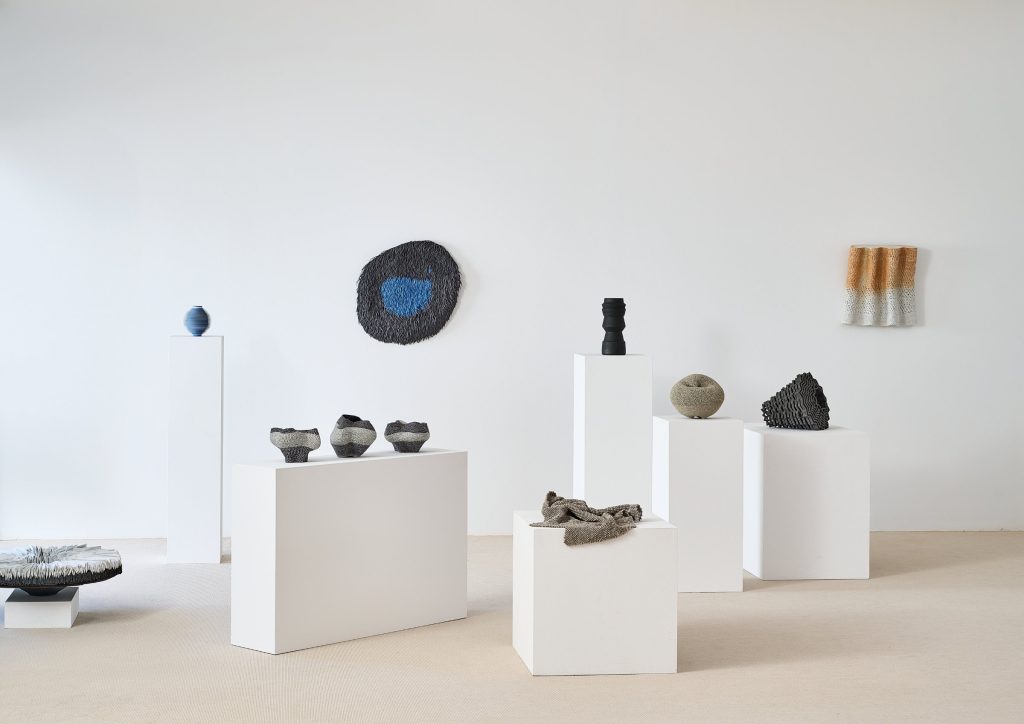
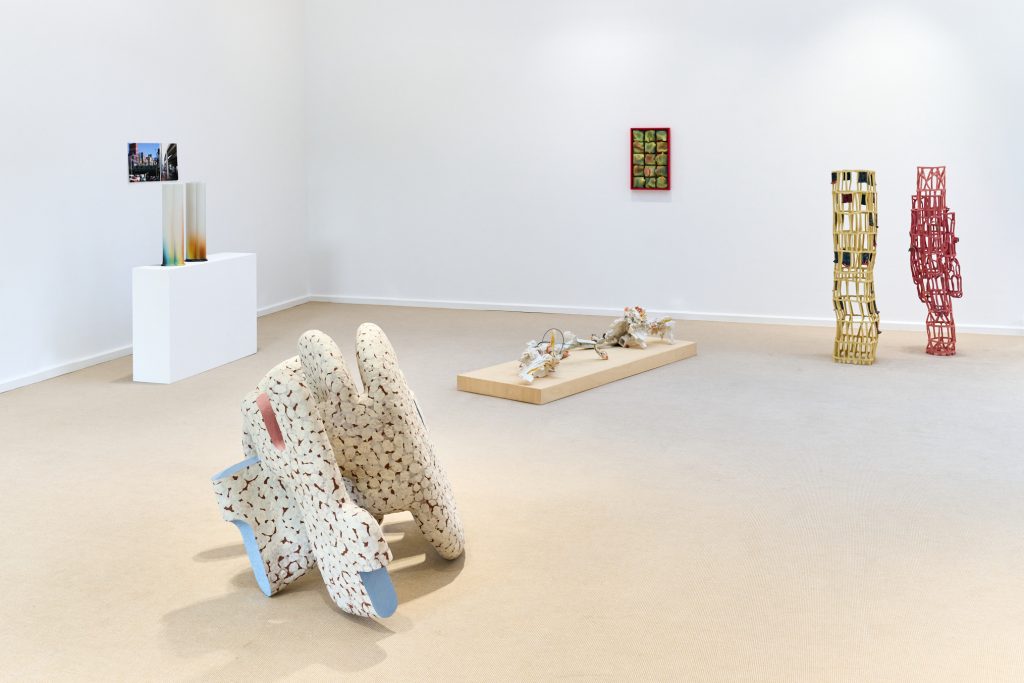
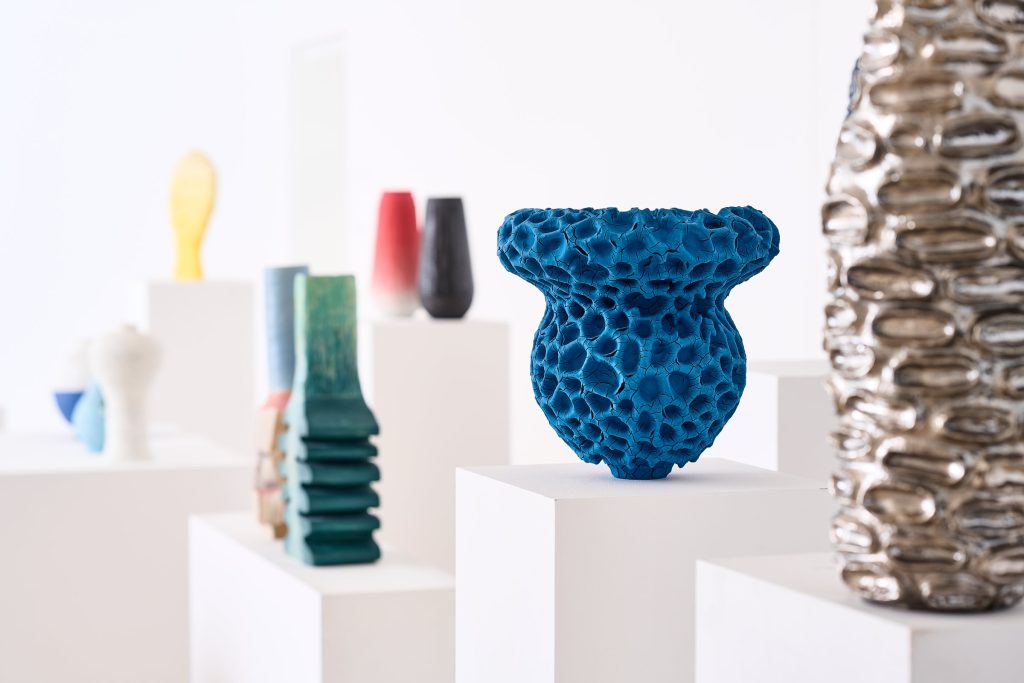

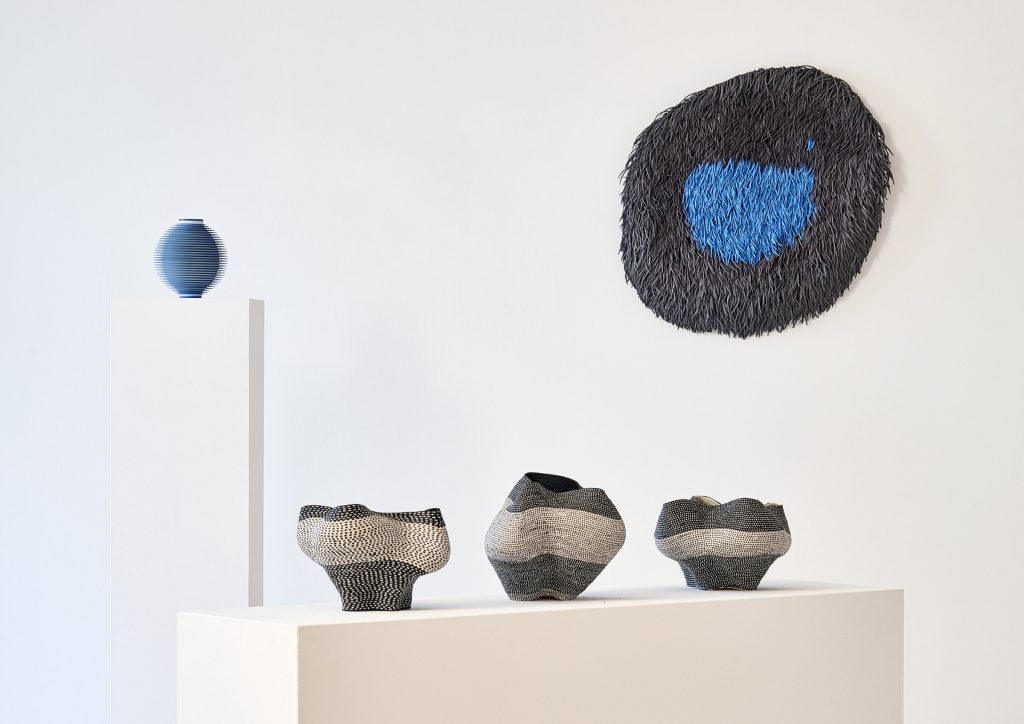
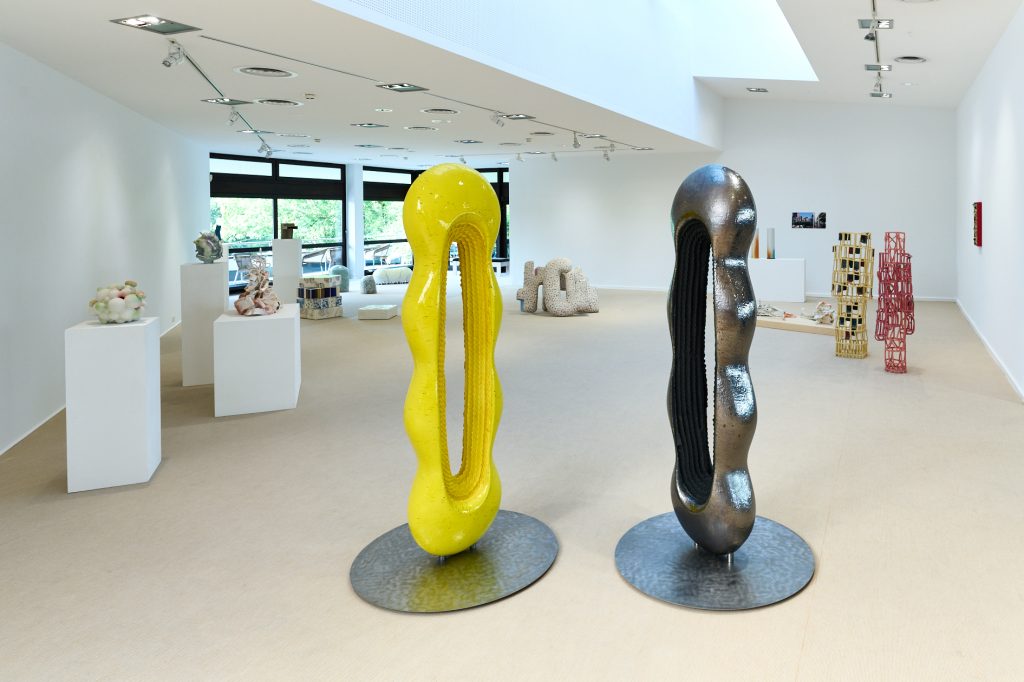
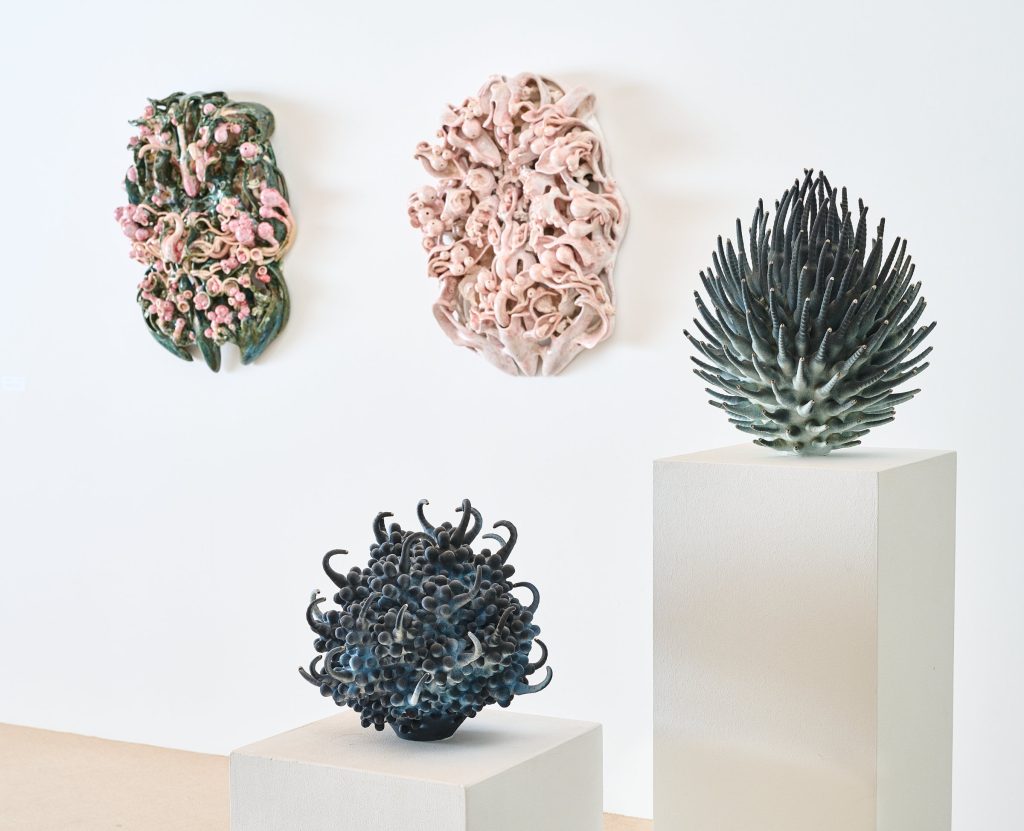
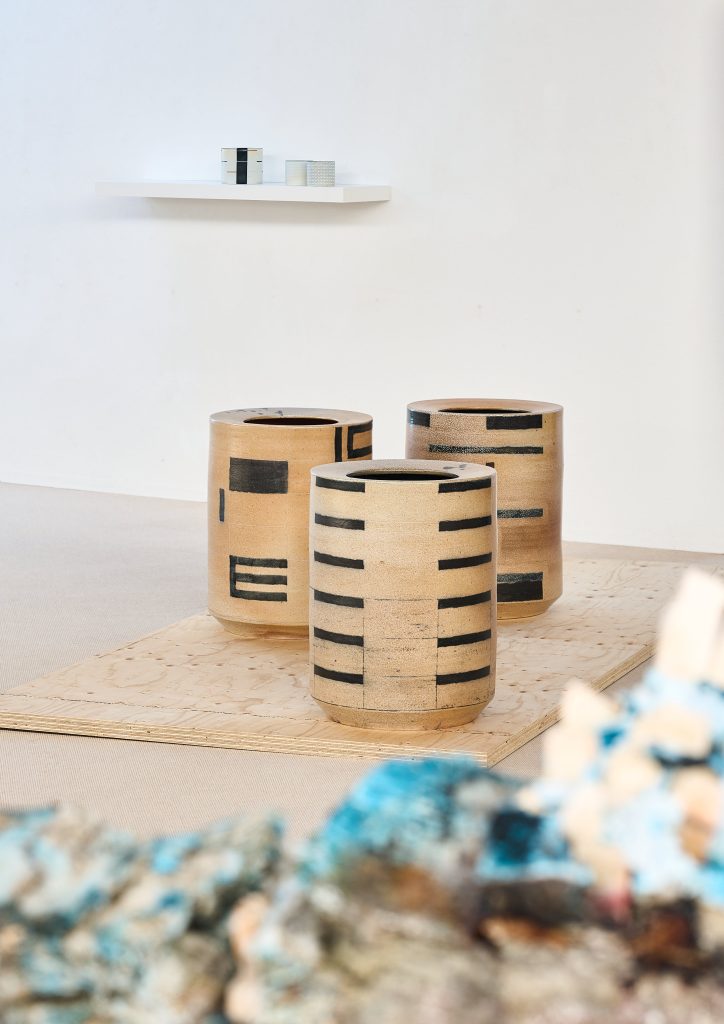
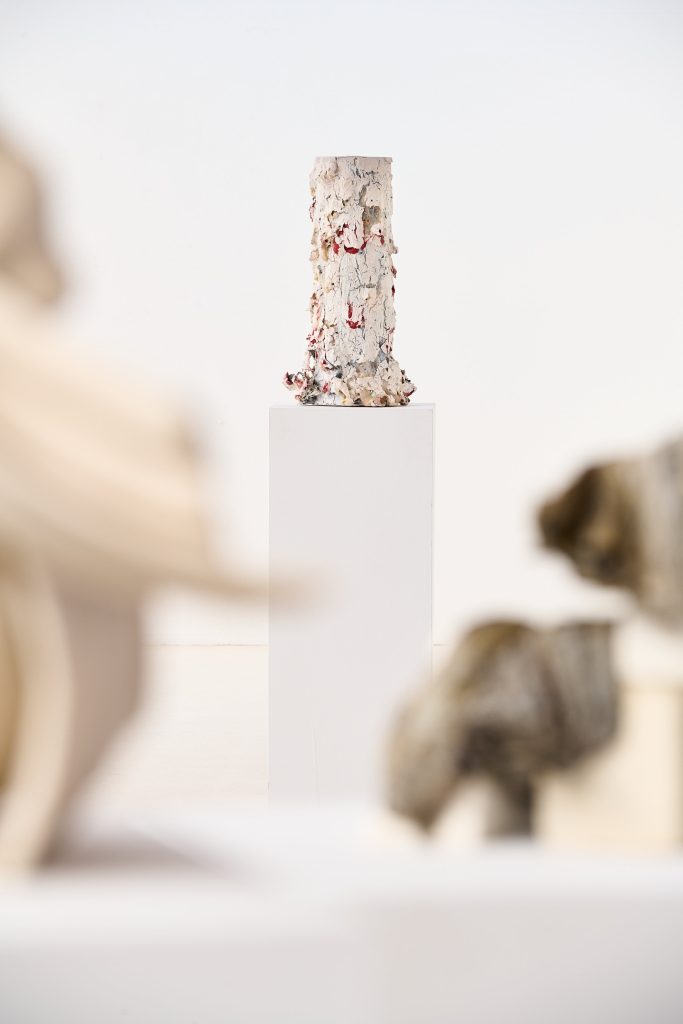
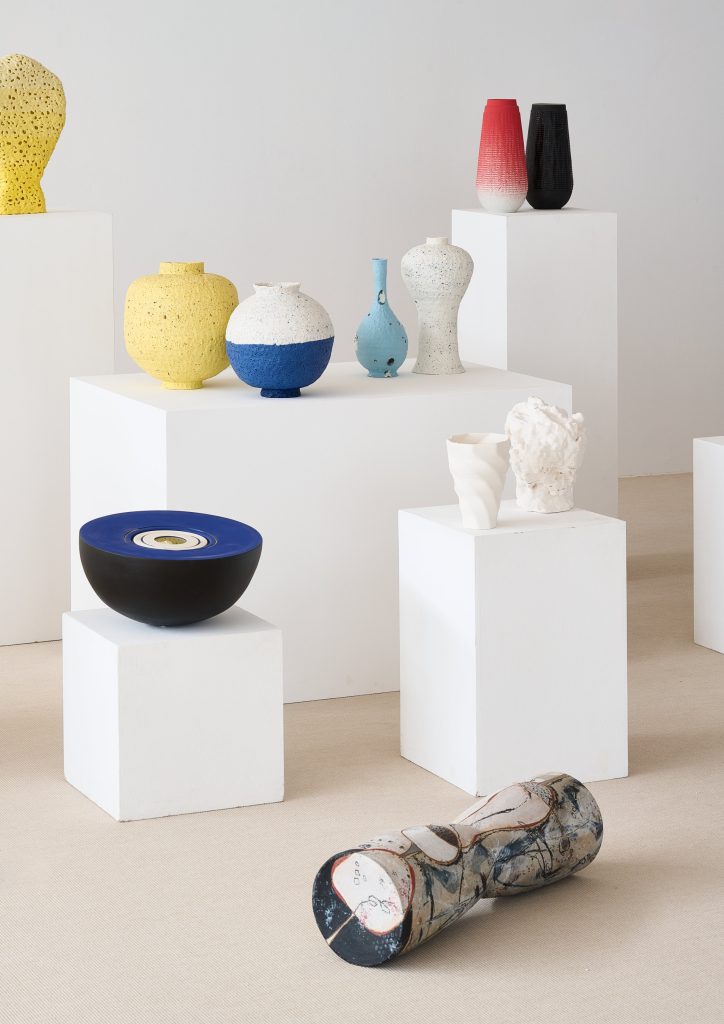
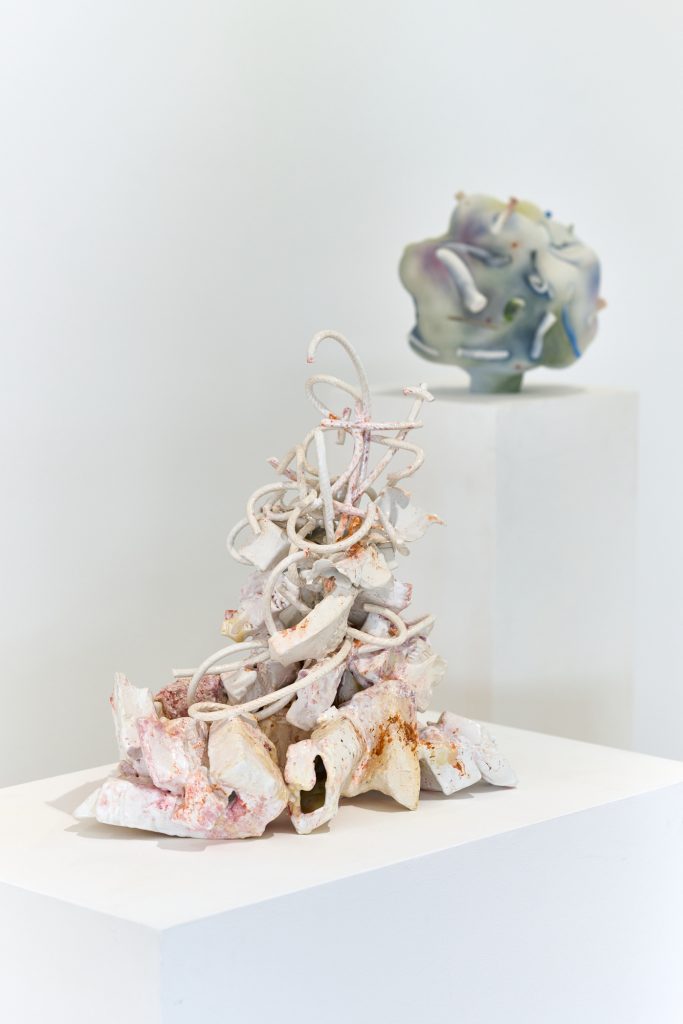

The 15th Westerwald Prize 2024 exhibition opens this week at Keramikmuseum Westerwald, Höhr-Grenzhausen, and will be on view through June 15, 2025.
A large number of works for the now fifteenth iteration of the Westerwald Prize started being uploaded on an online portal in October of 2023. The jury spent several weeks reviewing the 3192 images of all 1064 works by 627 anonymized entrants. Ninety works by 74 individuals were nominated in a first round of judging. Once they had been informed of their nomination, a caravan of couriers and shippers from all over Europe set out for the Keramikmuseum where the team unpacked works with utmost care, some pieces were professionally restored, crates were placed in storage and the works were installed in our largest, currently closed exhibition gallery.
In early June of 2024, the international jury traveled to Höhr-Grenzhausen and examined the artistry and craftsmanship of every single work over two days. As the chair of this round of judging, I would now like to summarize the jury’s observations and considerations in this report.
Remarkably, the entries for the New Talent Prize came from thirty-one different European educational institution rather than primarily from Germany’s three most prominent ceramics programs, as they normally do. It is gratifying to see that the material of clay no longer triggers inhibitions among students. Respect for hierarchies when selecting art materials is totally foreign to them. Professorships in ceramics remain rare, though, and their subject areas are being defined increasingly generally. All the same, many art schools have a ceramics studio. The job of teaching the material and maintaining ceramics networks has consequently shifted from the departments to the studios in many places. And, as can be seen, enthusiasm for ceramics is being imparted successfully there. The unflagging commitment of the many studio managers who are introducing a new generation to the ancient material and expertly advising them with much patience deserves praise here. The boundless enjoyment of experimenting, sometimes blithely devoid of any expertise, makes this is an extremely responsible job. The jury selected a work by Beate Gatschelhofer, a student at the University of Arts Linz, which is captivating with its soft colors and soft forms while asserting itself naturally in space through its size.
The entries for the Town of Höhr-Grenzhausen’s Prize for Salt-Glazed Ceramics prove what sustained support of regional traditions can do. Ever since Koblenz University of Applied Sciences’ Institute for Ceramic and Glass Art has been firing the last functioning Kannofen salt-glaze kiln on its premises every two years in collaboration with the town and the Keramikmuseum, the average age of the entrants for this prize has gratifyingly dropped by quite a few years. The many international participants in this Kannofen firing have increased the number of entries as a whole somewhat too. Hopefully, though, even far more will be entered for the next competition.
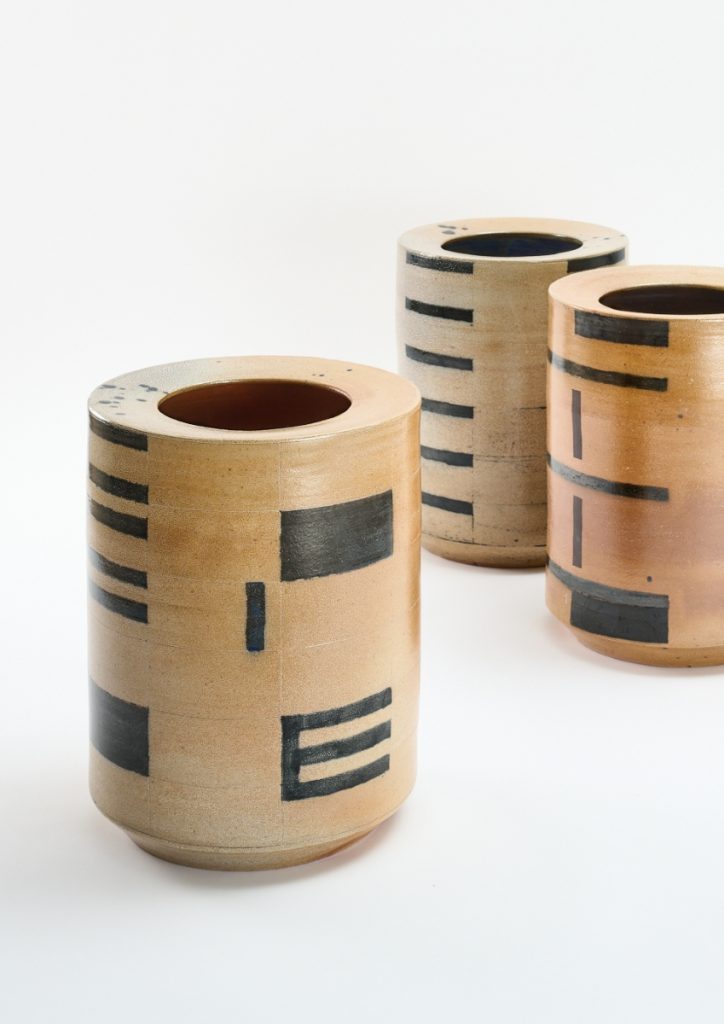
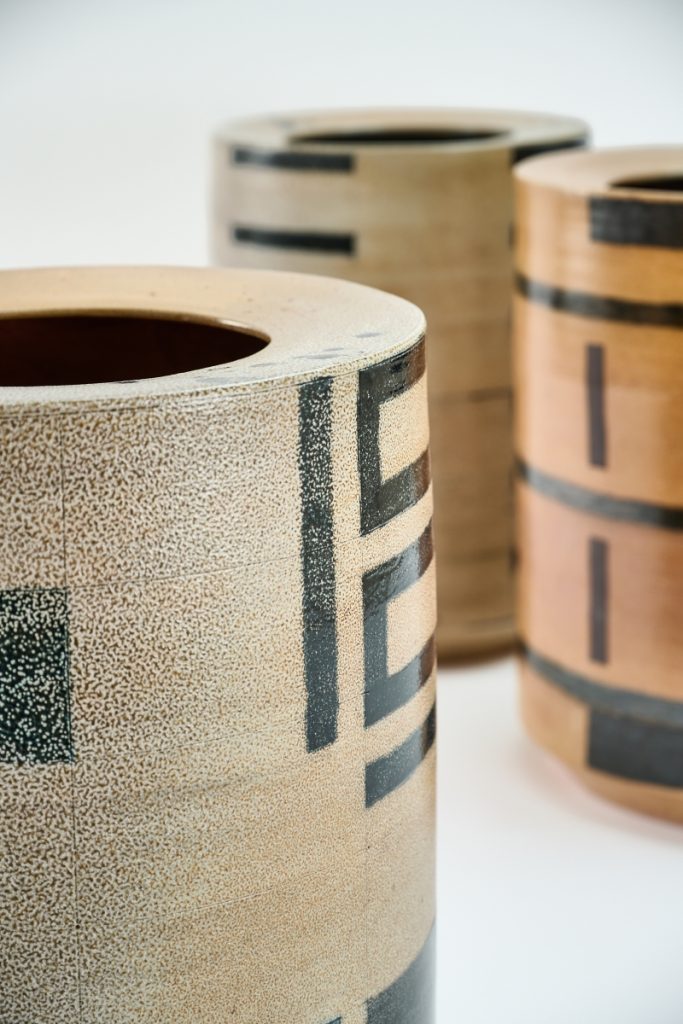
Bodil Manz was taken with the distinctive surface of salt firing in her early artistic career and has now employed it for the first time at the ripe old age of 80. The jury was fascinated and delighted by how Manz contemporized the features of salt firing in her unmistakable vessels. The jury hopes that the award of the prize to this world-famous artist will heighten interest in this singular and sole European glazing technique.
Most of the entries were submitted for the category of “Freeform Ceramics”. They reveal the wide range of means of artistic expression. Apart from many accomplished true ceramicists, an ever-increasing number of artists are working with various media. Particularly interesting are works employing design principles and applied art techniques of other genres, such as textile arts. A receptive eye is inspirational and produces fascinating works.
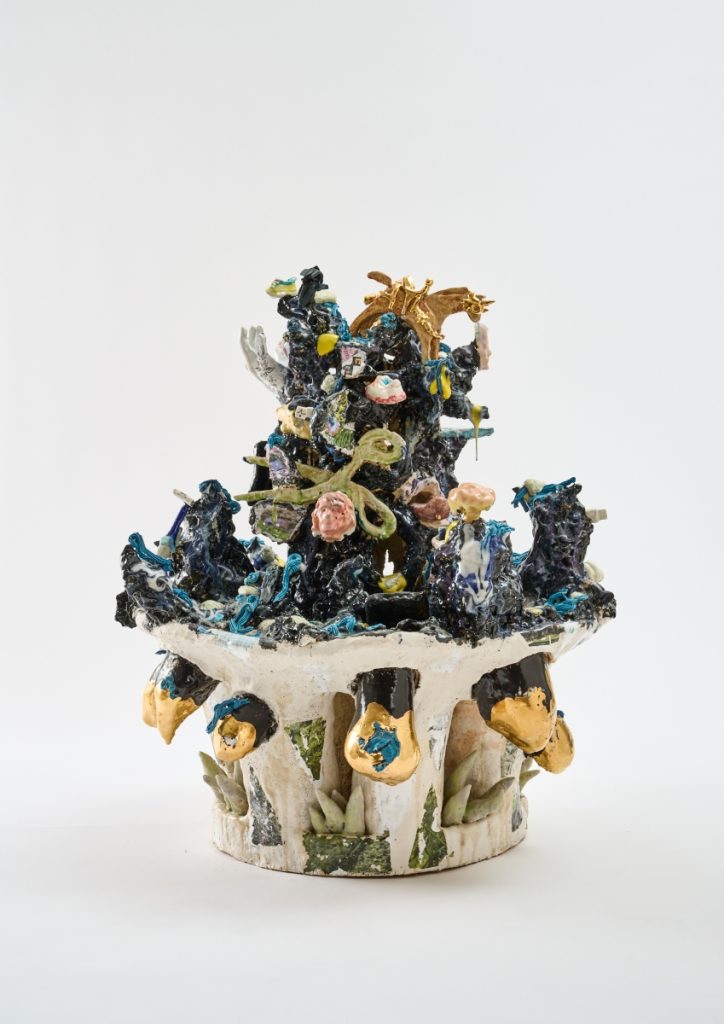
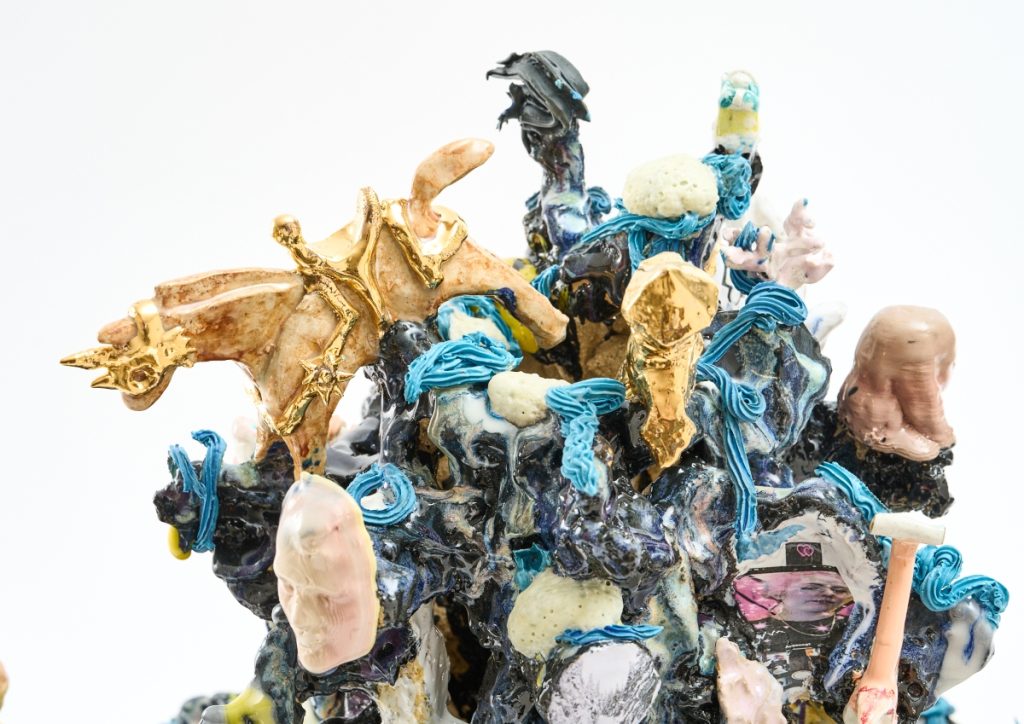
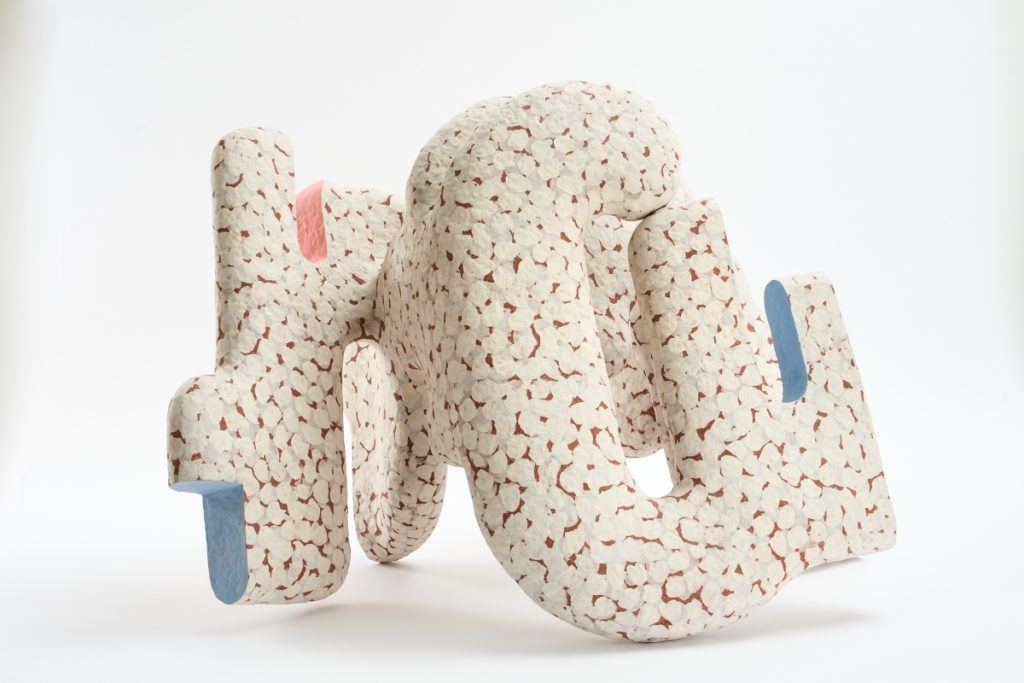
Aptly modern and therefore absolutely worthy of a 2024 Westerwald Prize is Nora Arrieta’s vessel Toteninsel (Isle of the Dead). Her work with an archaic material combined with the latest technology, such as 3D printing, puts our present-day media overload on pause forever.
First-prize winner Irina Razumovskaya impressively demonstrates how a glaze can turn into tangible emotions. The sculptural glaze on a plainly turned cylinder displays intricate complexity most aesthetically. Color and movement become tangible, decay and pain become palpable, contrasting sharply with the high gloss glazes that still dominated the first Westerwald Prize competitions.
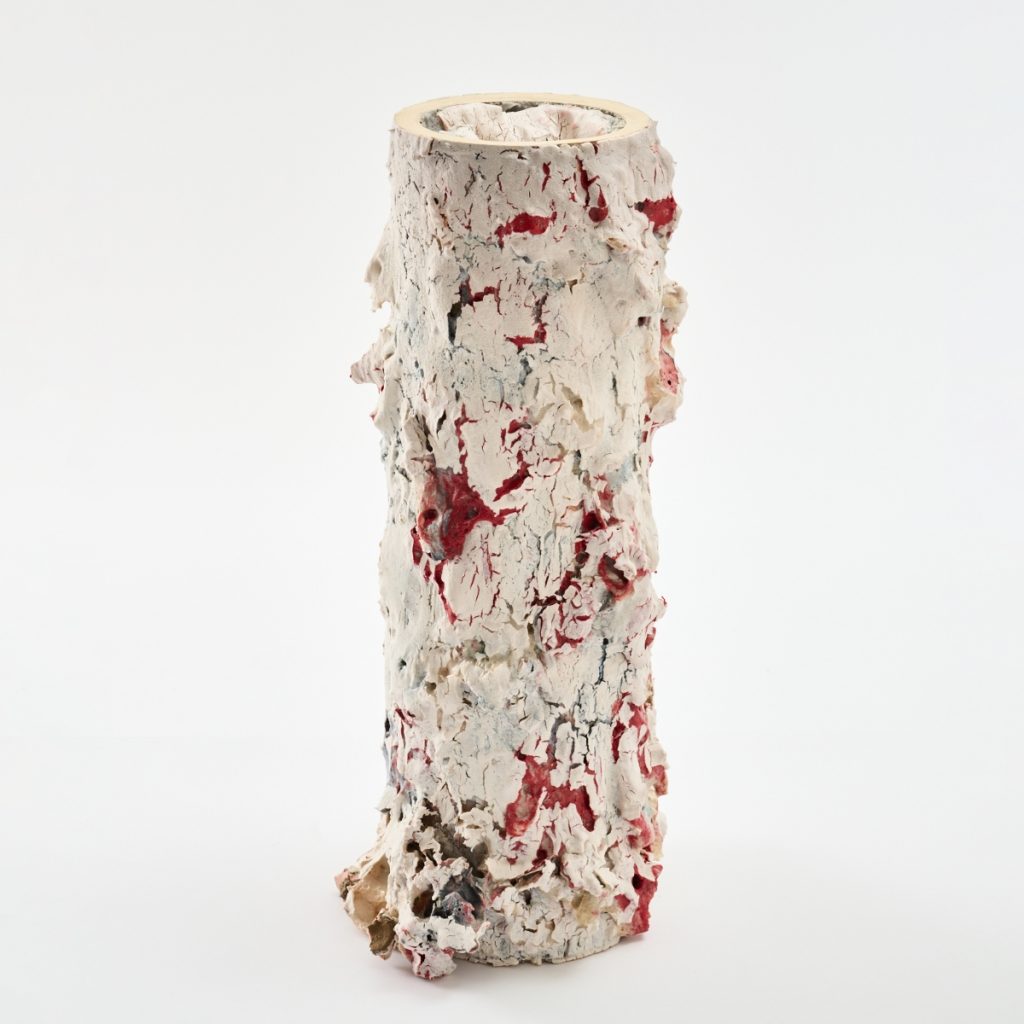
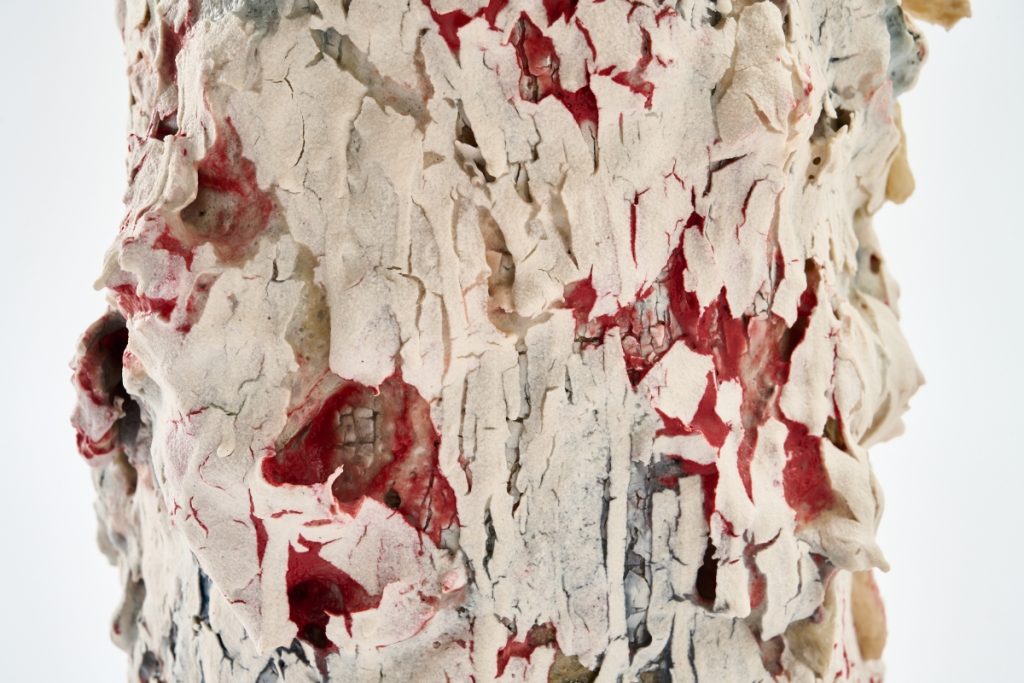
The complex and hardened situation of our world and our small continent demands dialogue and cultural exchange now more than ever, something specifically desired when the Westerwald Prize was established fifty years ago. Art can speak wherever words lose their power and meaning. It has its own ways to visualize complexity, comment on events or link ideas. In this spirit, the jury thanks Westerwald County, which has been providing this speech an arena for half a century.
Text by Nele van Wieringen, Director of the Keramikmuseum Westerwald and Chair of the Jury
The opening of the exhibition and awards ceremony will take place on Friday, September 27, at 7 pm, followed by a symposium the next day, titled Facts and Visions of Sustainability in Ceramics.
Contact
kontakt@keramikmuseum.de
Keramikmuseum Westerwald
Lindenstraße 13
56203 Höhr-Grenzhausen
Germany
Photos by Helge Articus



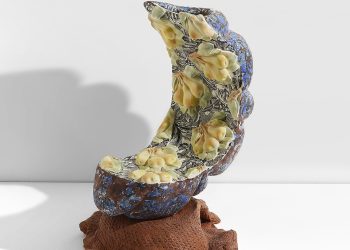

















Comments 1